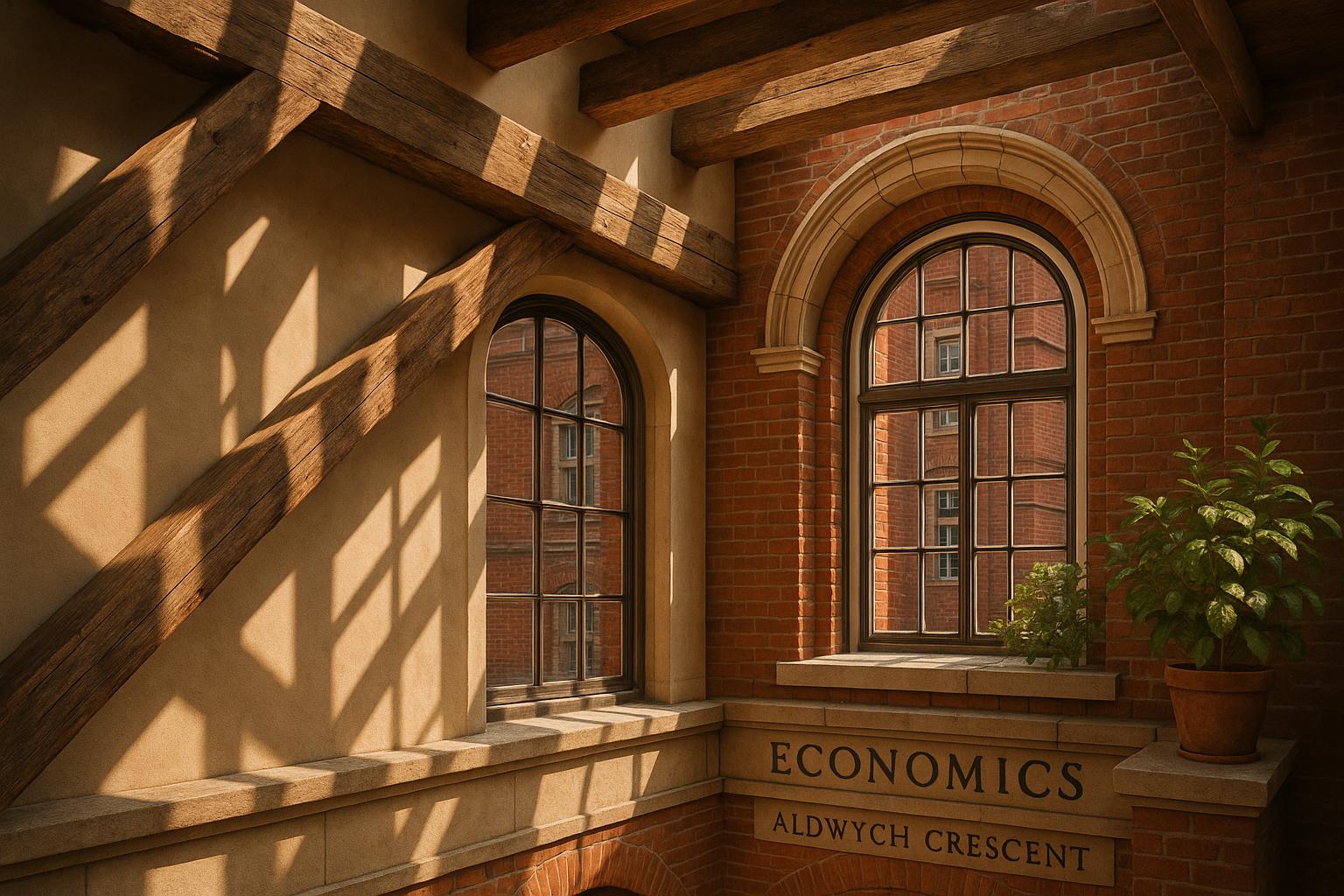Feix&Merlin Architects, in collaboration with Alison Brooks Architects, have been selected to lead the comprehensive overhaul of the early 20th-century building at 61 Aldwych Crescent for the London School of Economics (LSE). The appointment follows a unanimous jury decision that favoured their biophilic design proposal, which also garnered overwhelming public support during the summer consultation on the five shortlisted schemes. The project, slated for completion by 2028 subject to planning approval, aims to transform the historically significant building into a vibrant academic and research hub that fosters a strong connection to nature.
The winning design features a striking new entrance on Aldwych Crescent and a projecting bay window intended to open the building up to the street, creating a more inviting civic presence on the prominent corner site that interfaces Kingsway and Aldwych. At street level, the scheme seeks to reactivate the space, while a roof terrace is set to provide panoramic outdoor space for students and staff. Internally, the design highlights a bold sculptural staircase inspired by the natural formation of a ravine, embedding biophilic principles throughout to craft an environment conducive to social learning and research excellence. This approach includes collaboration with specialist consultants to realise an integrated biophilic design, reflecting the university’s ambition to set new standards for sustainability and wellbeing in higher education spaces.
Julian Robertson, LSE’s director of estates, emphasised the importance of both the team dynamic and the scheme’s sensitivity to heritage and sustainability. He noted that the collaboration between Feix&Merlin and Alison Brooks Architects demonstrated a thoughtful commitment to reusing existing fabric through a light but impactful intervention. He highlighted that this approach aligns with both economic and environmental objectives and praised the carefully considered links to the LSE’s Old Building, including potential upper-floor connections. Robertson positioned the project as part of the institution’s wider vision following its recognition as University of the Year for a second consecutive year, underscoring the university’s drive to ensure the refurbishment meets this lofty accolade.
For Feix&Merlin, the project marks their most ambitious to date, representing a landmark moment of transformation for a prestigious London institution. Their co-founder Tarek Merlin described the scheme as a bold reimagining of a prominent site, envisaging 61 Aldwych as not only a cutting-edge learning environment but also a significant urban gateway. He suggested that, through their biophilic design approach, the building could become the greenest on the LSE campus, reflecting next-generation standards in education facilities and sustainability.
The building’s storied past enriches the project’s context, having once served as the Air Ministry before transitioning into Television House, and later housing Exxon Mobil. The LSE acquired the 17,600 square metre property from a China-based investor in May for £170 million. This investment complements the university’s ongoing campus developments, which include a £100 million retrofit and extension by David Chipperfield Architects and Feix&Merlin at 35 Lincoln’s Inn Fields, also characterised by a strong sustainability focus. That project, known as the Firoz Lalji Global Hub, is expected to become the UK’s largest Passivhaus retrofit building and LSE’s first net-zero carbon academic building, housing several academic departments and research centres.
Feix&Merlin’s success with the 61 Aldwych project builds on recent accolades, notably their recognition as Practice of the Year at the 2025 AJ Retrofit & Reuse Awards for their sensitive £18.4 million restoration of Walworth Town Hall. The judges commended the practice’s ability to balance heritage conservation with modern adaptive reuse, transforming the former Grade II-listed fire-damaged building into a community hub and workspace while retaining most of its original structure.
In addition to their work with Alison Brooks, Feix&Merlin have been involved in other regeneration projects in London, including recent plans to revitalise public realm and railway arches in Walthamstow. This breadth of experience in both heritage retrofit and public realm enhancement situates them as a significant architectural practice deeply engaged in sustainable and community-conscious urban development.
The 61 Aldwych Crescent project thus represents a fusion of heritage-sensitive design, innovative biophilic principles, and sustainable retrofit strategies, positioning the LSE campus at the forefront of environmentally progressive and socially engaged higher education architecture.
📌 Reference Map:
- Paragraph 1 – [1], [2]
- Paragraph 2 – [1], [2]
- Paragraph 3 – [1]
- Paragraph 4 – [1]
- Paragraph 5 – [1], [4], [5]
- Paragraph 6 – [1], [3], [7]
- Paragraph 7 – [6]
- Paragraph 8 – [1], [2], [4], [5]
Source: Noah Wire Services
